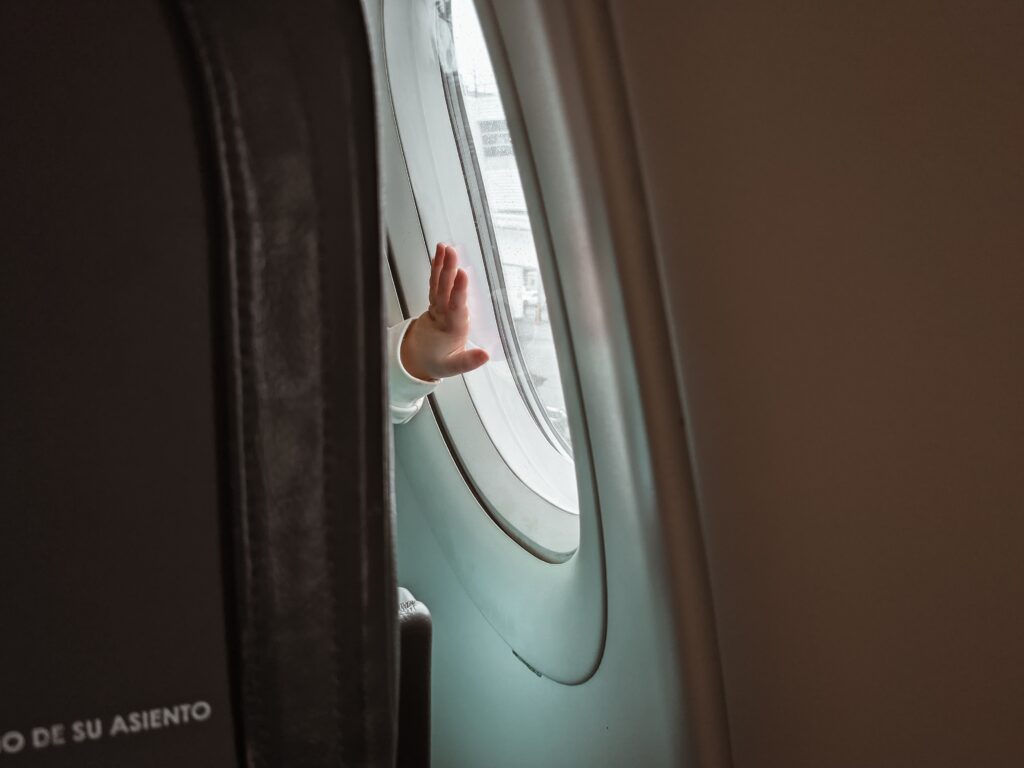The flying with a baby can be an exciting yet challenging experience for new parents. Ensuring you have the right travel essentials for your little one is crucial to make the journey comfortable and stress-free. In this article we will explore the must-have items for your first trip with a newborn. Let’s dive in!
-
Diaper Bag:
A well-stocked diaper bag is a parent’s best friend when traveling with a baby. Invest in a spacious and organised bag that can accommodate diapers, wipes, changing pads, extra clothes, burp cloths and other essentials. Look for versatile diaper bags with multiple compartments such as the highly-rated “BabbleRoo Baby Changing Bag Backpack” available on Amazon.
-
Travel-friendly Stroller:
Opt for a lightweight and compact stroller that is easy to manoeuvre and fold, making it ideal for travel, especially cabin-friendly ones that are designed to be compact, lightweight and easy to manoeuvre and specifically designed to meet the requirements of most airlines, allowing them to be brought on board as cabin baggage.
Consider features like a size and weight, reclining options, foldability and manoeuvrability, and storage basket. The “Lejoux™ Baby Pushchair Stroller” is a popular choice among parents, offering convenience and durability for on-the-go adventures.
Remember to check the specific airline’s guidelines regarding cabin strollers, as size and weight because restrictions may vary. It’s also advisable to consider customer reviews and ratings to get an idea of the stroller’s performance and durability before making a purchase.
-
Portable Crib or Travel Bassinet:
To ensure your baby has a safe and comfortable place to sleep, a portable crib or travel bassinet is essential. Look for a compact and easy-to-assemble option that meets safety standards.
-
Baby Carrier or Sling:
Having a baby carrier or sling allows you to keep your hands free (very important, especially for airport formalities and later on to explore new places). Choose a carrier that provides proper support for your baby’s head and neck and offers adjustable straps for a comfortable fit. The “Ergobaby Omni 360 All-in-One Baby Carrier” is a popular choice, providing ergonomic support for both parent and baby.
-
Nursing Cover or Bottle Feeding Accessories:
If you are breastfeeding, a nursing cover can provide privacy and convenience while on the go. Alternatively, if you are bottle-feeding, make sure to carry enough bottles, formula and sterilising equipment.
And, if your baby uses pacifiers, bring a few extras to provide comfort and soothe during the journey.
-
Baby Travel Essentials Kit:
A compact travel essentials kit can save you from any unforeseen situations. Include items like baby-safe sunscreen, hand sanitiser, baby wipes, diaper rash cream and a digital thermometer. The “Tommee Tippee Baby Healthcare and Grooming Kit” is a comprehensive option that covers most essential items.
Consider the changes in air pressure
Babies may cry during flights due to discomfort caused by changes in air pressure that affect their ears.
When an airplane takes off or descends, the cabin’s air pressure changes rapidly. However, the Eustachian tubes in babies’ ears, which connect the middle ear to the back of the throat, are narrower and more horizontal compared to those of adults. This makes it more challenging for babies to equalise the pressure in their ears effectively.
As the plane gains altitude during takeoff the air pressure decreases. If the Eustachian tubes do not open and close properly, babies may experience a sensation of increased pressure in their ears. This pressure difference can cause discomfort, pain or a “plugged” feeling in their ears.
Here are some tips to help protect your baby’s ears during a flight:
- Breastfeed or Bottle-feed During Takeoff and Landing: Nursing or giving your baby a bottle during takeoff and landing can help alleviate ear pressure. The sucking motion helps equalize the pressure in the ears, reducing discomfort. If your baby isn’t hungry a pacifier can also serve the same purpose.
- Avoid Earplugs or Headphones: While adults may use earplugs or noise-canceling headphones to block out cabin noise it’s not recommended for babies. Infants and young children should be able to hear clearly to help regulate their balance and adjust to changes in cabin pressure.
- Use a Warm Compress: If your baby experiences ear pain, a warm compress applied gently to the affected ear can provide some relief. Ensure the compress is warm and not hot and always test it on your skin first to ensure it’s comfortable for your baby.

Consult Your Paediatrician
If you have any concerns about your baby’s ears or if they have a history of ear infections, it’s always a good idea to consult your paediatrician before flying. They can provide specific advice and guidance based on your baby’s individual needs.
Choose Flights Wisely
Consider booking flights during your baby’s usual naptime or bedtime. The chances of them sleeping during the flight increase, reducing the chances of ear discomfort.
Embarking on your first trip with a newborn requires careful planning and packing of essential items. By considering the travel essentials and tips mentioned above, you can ensure a smooth and enjoyable journey for both you and your baby. Remember to choose products that suit your specific needs and preferences and always prioritise safety and comfort.
Happy travels with your little one!
Want to read more? Discover “My journey” and learn about Maca’s first-person experience, her pregnancy and her first baby.






